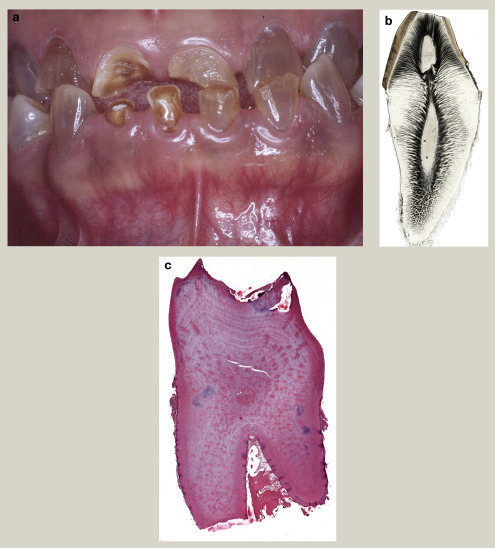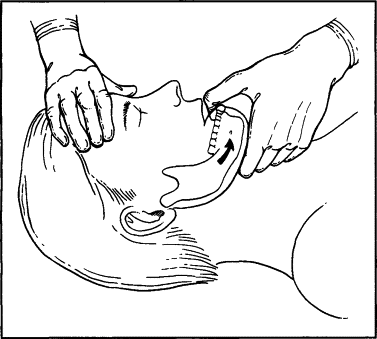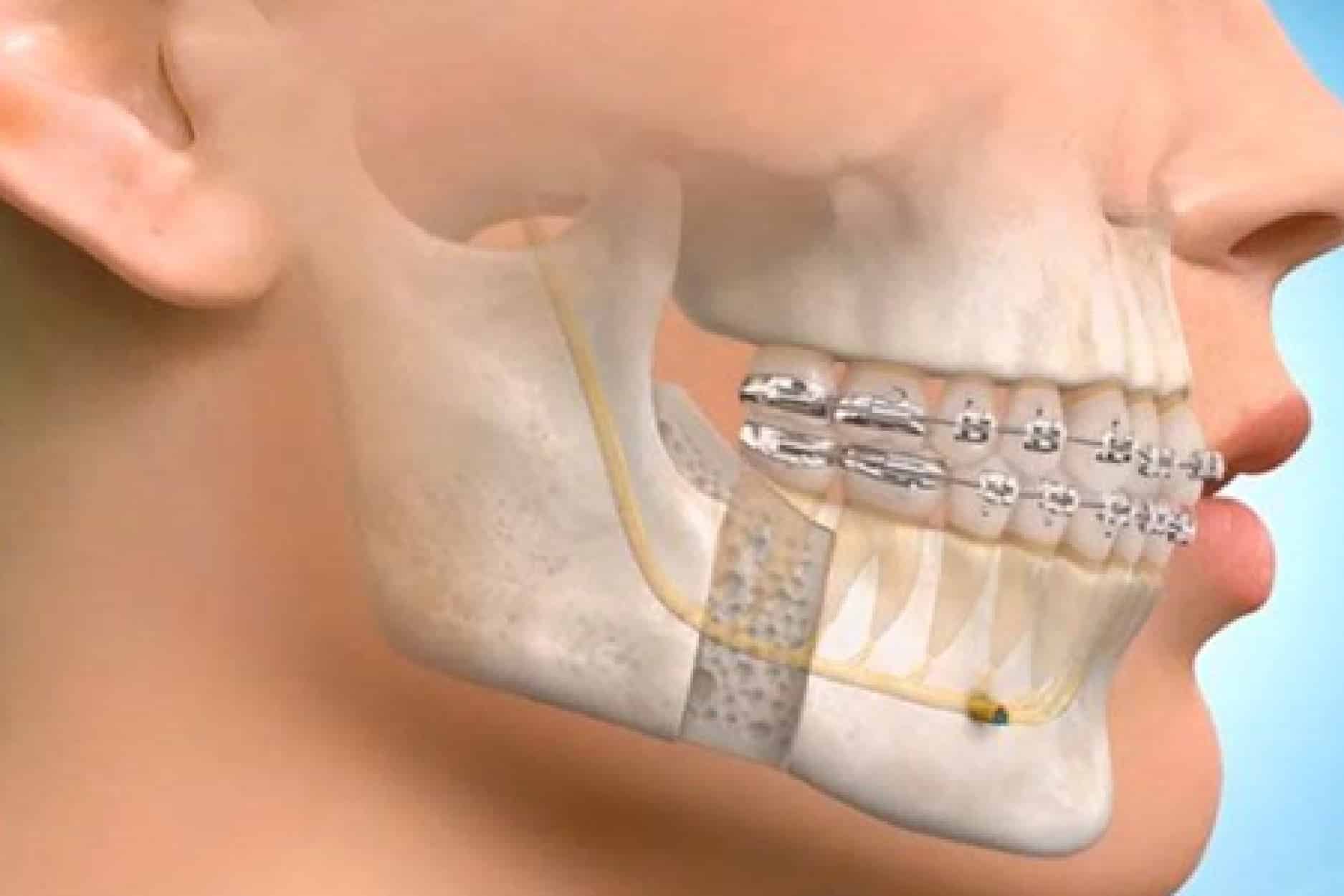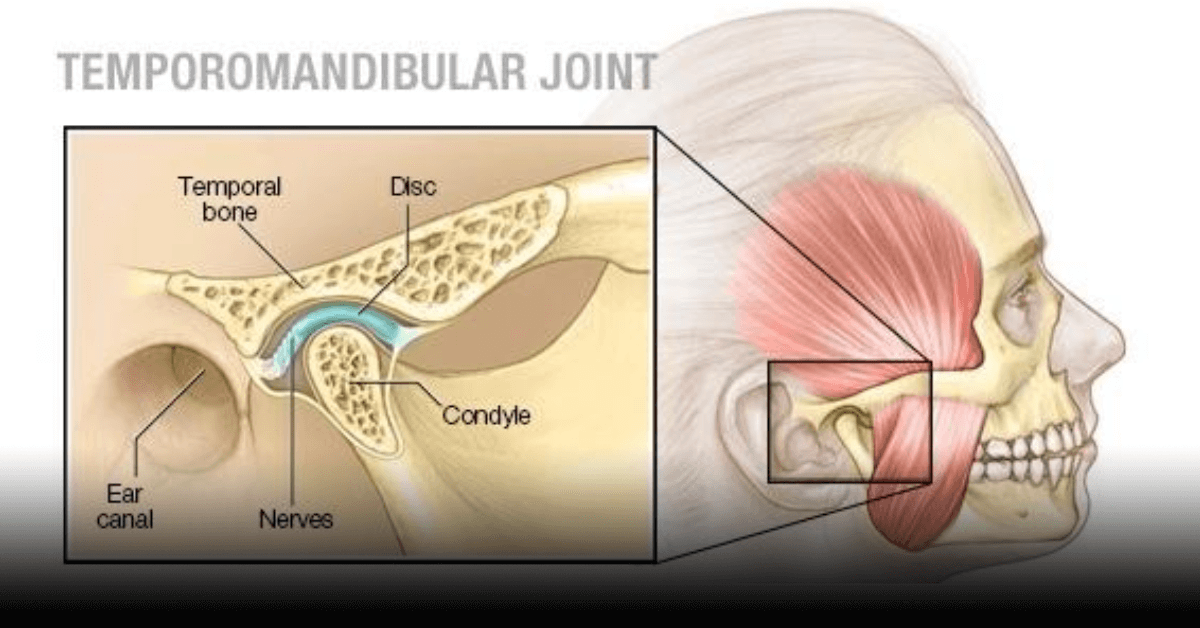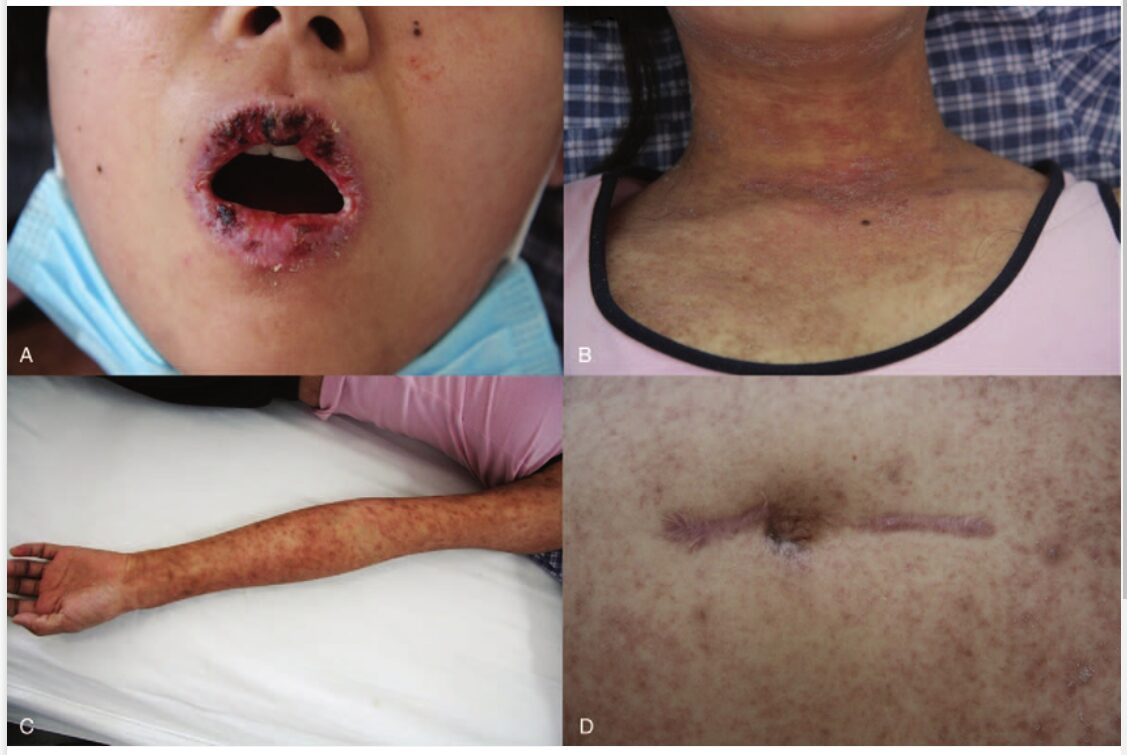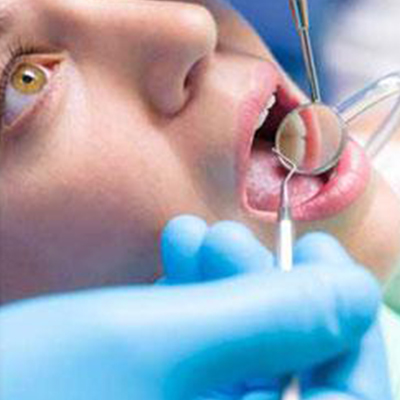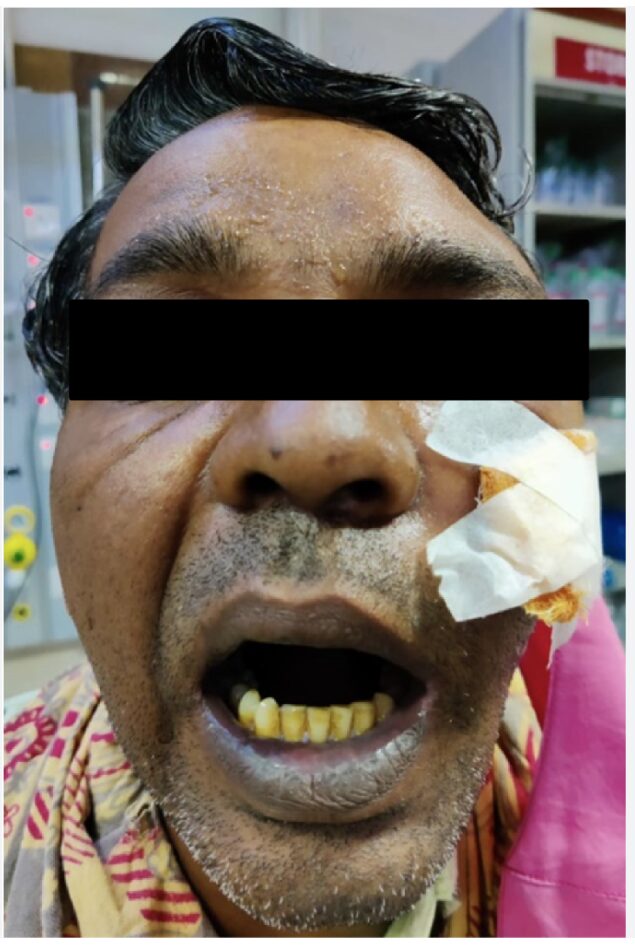Oral and Maxillofacial Pathology MCQsOral and Maxillofacial Surgery MCQs
MCQs on Odontogenic Cysts & Tumors – Oral and Maxillofacial Surgery
In this Post you will be able to take quiz containing important MCQs of Oral and Maxillofacial Surgery and topic covered in this Quiz will be Odontogenic Cysts & Tumors . Correct Answers are Marked in Bold and Blue colour.
Odontogenic Cysts and Tumors Multiple Choice Questions
- Multiple bilateral dentigerous cysts are seen in:
A. Down’s syndrome
B. Maroteaux lamy syndrome
C. Teacher collin syndrome
D. Gorlin Goltz syndrome - COC is now called as:
A. Odontogenic ghost cell tumor
B. Dentinogenic ghost cell tumor
C. Keratcysticodontogenic tumour
D. A & C - Facial nerve paralysis is common with:
A. Pleomorphic adenoma
B. Epidermoid carcinoma
C. Warthin’s stumour
D. Lymphoepithelial carcinoma
- The most aggressive and destructive cyst is:
A. Periapical cyst
B. Dentigerous cyst
C. Globulomaxillary cyst
D. Nasopalatine cyst - Standard treatment of ameloblastoma:
A. Segmental resection with 1 cm of normal bone
B. Enbloc resection
C. Enucleation
D. Enucleation with cauterization - The most common odontogenic cyst is:
A. Primordial cyst
B. Dentigerous cyst
C. Radicular cyst
D. Mucocele - Cyst arising from dental lamina:
A. Radicular cyst
B. Paradental cyst
C. Eruption cyst
D. Glandular odontogenic cyst
- Adenomatoid odontogenic tumour is characterized histologically by:
A. Polyhedral epithelial cells
B. Tubular / duct like cells
C. Stellate shaped cells
D. Stratified squamous epithelial cells - The Pathogenesis of Periapical Cyst is:
A. Increased pressure within the cyst
B. Immune mediated bone destruction
C. Proliferation of epithelium
D. None of the above - A six year old child patient has blue-dome shaped swelling in posterior mandibular region, what will be the treatment plan?
A. Reassure the patient without any treatment
B. Excise the lesion
C. Marsupialization
D. Surgical Excision - Pindborg tumor arises from:
A. Basal layer of cells
B. Stratum intermedium
C. Stratum corneum
D. Dental lamina
E. Both B & D
- A 36 year old man with an asymptomatic swelling in the body of the mandible with radiographic features of radiolucency with radiopaque flecks in suffering from:
A. Odontogenic keratocyst
B. Calcifying epithelial odontogenic tumor (CEOT)
C. Ameloblastoma
D. None of the above - Multiple periapical radiolucencies are seen in:
A. Jawcyst basal cell Nevus Syndrome
B. Odontogenic keratocyst
C. Cherubism
D. thyroid disorders - Clear cells are commonly seen in which of the following lesions?
A. Pleomorphic
B. Warthins tumor
C. Mucoepidermoid
D. Adenomatoid odontogenic tumor - The epithelium of a dentigerous cyst is:
A. 15-20 cell thick
B. 6-10 cell thick
C. 2-4 cell thick
D. 1-2 cell thick - Dentigerous cyst is associated with the following:
A. Impacted 3rd molar
B. Impacted supernumerary tooth
C. Odontome
D. All of the above
- A patient with ameloblastoma of the jaw can best be treated by:
A. Irradiation
B. Excision
C. Enucleation
D. Surgical removal followed by cauterization
- After entering radiolucent lesion in a 30 years old man hollow cavity without epithelial lining is seen, the most probable diagnosis is:
A. Aneurysmal bone cyst
B. Static bone cavity
C. Memorrhagic bone cyst
D. Ameloblastoma - Dentigerous cyst is suspected if the follicular space is more than:
A. 2-3 mm
B. 3-4 mm
C. 1-2 mm
D. >5 mm
- Compound odontoma shows:
A. Mixed tissue of dental origin with no resemblance to tooth structure
B. Numerous tooth like structure with denticles commonly found in maxillary lateral incisors
C. Haphazardly arranged calcified mass
D. All of the above - Destructively invasive locally malignant with rare metastasis, the lesion is:
A. Fibroma
B. Ameloblastoma
C. Papilloma
D. None of the above - Lesions associated with vital tooth?
A. condensing osteitis
B. cementoma
C. Periapical abscess
D. None of the above - Treatment for cementoma:
A. No treatment
B. Pulpectomy
C. Resection of jaw
D. None of the above - A 25 year old male patient reports with bony expansile swelling of the right body of the mandible & mild paresthesia of the right IDN. OPG shows a multi locular radiolucency without root resorption. What would be your choice of next investigation?
A. Excision biopsy
B. Aspiration Cytology
C. CT Scan
D. Pet Bone scan - Ghost (shadow) cells are seen in:
A. Amebloblastic fibroodontoma
B. Calcifying odontogenic cyst
C. Compound odontoma
D. All of the above
- Adamantinoma is:
A. A tumour from embrynomal cells of developing teeth
B. Also known as Amebloblastoma
C. is a complication of dentigerous cyst
D. All of the above
- Adenomatold odontogenic tumour is most commonly found in:
A. Anterior mandible
B. Posterior maxilla
C. Anterior maxilla
D. Ramus of mandible - Multiple odontogenic keratocyst are associated with:
A. Gardner’s syndrome
B. Gorlin-Goltz syndrome
C. Goldenhar’s syndrome
D. Grinspan syndrome - Which histopathological type of odontogenic keratocyst is commoner, more invasive & has a greater tendency for recurrence ?
A. Orthokeratinised
B. Parakeratinised
C. Non-Keratinised
D. Diskeratinised - A 40 year old woman has meloblastoma, the histomorphologic features will be:
A. Peripheral palisading cellular strand with central loose stellate reticulum
B. Peripheral palisading with central stromal retraction artefact
C. Peripheral palisading cellular strand with peripheral loose stellate reticulum
D. Central loose stellate reticulum shows marked nuclear atypia and numerous mitotic - Which of the following is wrong about keratocyst:
A. Haw low recurrence rate
B. Has low protein content
C. High recurrence rate
D. B and C - Each of the following cyst is associated with an impacted tooth except:
A. Dentigerous cyst
B. Clacifying epithelial odontogenic cyst
C. Keratocyst
D. Primordial cyst
- Keratocyst has all of the following features except:
A. It is more common in mandible
B. May be filled with thin straw coloured fluid
C. Low recurrence rate
D. Expansion of bone clinically seen - A multilocular cyst of the jaw is more likely:
A. Dental cyst
B. Dentigerous cyst
C. Keratocyst
D. Simple bone cyst - The cyst with highest recurrence rate is:
A. Keratocyst
B. Periapical cyst
C. Nasoalveolar cyst
D. Globulamaxilary cyst - The most ideal expianation for recurrence of odontogenic keratocyst is:
A. Increased mitotic activity of the epithelial lining
B. Friability of the epithelial lining
C. Presence of satellite cysts or daughter cysts
D. Continued proliferation of rests of dental lamina - Unicentric, non-functional, anatomically benign, clinically persistent tumor is:
A. CEOT
B. Enameloma
C. Odontoma
D. Ameloblastoma
- Radiographic finding in pindborg tumour is:
A. Sun-burst appearance
B. Onion – peel appearance
C. Driven-snow appearance
D. Cherry -blossom appearance - Robinson’s classification of ameloblastoma does not include:
A. Multicentric
B. Non-Functional
C. Anatomically benign
D. clinically persistent - Primordial cyst develops:
A. In place of missing teeth
B. In teeth in which crown development is completed
C. In periapical region
D. In mandibular body - Odontogenic keratocyst has the following feature:
A. Occurs due to infection periapically
B. Is developmental in origin
C. Can be treated by aspiration
D. Has low recurrence rate - Dentigerous cyst is likely to cause which neoplasia:
A. Ameloblastoma
B. Adeno carcinoma
C. Fibrosarcoma
D. All of the above - One of them is not a true cyst:
A. Nemorrhagic cyst
B. Median palatal
C. Globulomaxillary
D. Nasolabial - Which of the following is the most common lesion of the mandible?
A. Adamantinoma
B. Osteogenic sarcoma
C. Squamous cell carcinoma
D. Osteoclastoma - Basal layer in primordial cyst is arranged in the form of:
A. Tennis racket
B. Picket fence
C. Linear
D. Irregular - Nodular growth of alveolus is seen in:
A. Paget’s disease
B. Osteomas
C. Cementifying fibroma
D. All of these - Which of the following shows the presence of cholesterol crystals?
A. Keratocyst
B. Periodontal cyst
C. Aneurysmal cyst
D. Hemorrhagic cyst - The most common odontogenic tumour which occurs in relation to an unerupted tooth in the anterior maxilla:
A. Odontogenic adenomatoid tumour
B. Odontoma
C. Myxoma
D. Cementifying fibroma - Which of the following is an odontogenic tumor?
A. Arrhenoblastoma
B. Astrocytoma
C. Ameloblastoma
D. Granular cell tumor - Leisegang rings are found in:
A. Calcifying epithelial odontogenic cyst
B. Primordial cyst
C. Calcifying epithelial odontogenic tumor
D. Odontoma - Eruption cyst:
A. Transforms into dentigerous cyst
B. Regresses after eruption of the tooth
C. Is found in the place of the missing tooth
D. Is a type of dentigerous cyst - Botryoid odontogenic cyst is a variant of:
A. Lateral periodontal cyst
B. Apical periodontal cyst
C. Gingival cyst of new born
D. Gingival cysts of adult - Which of the following is a true neoplasm of functional cementoblasts:
A. Periapical cemental dysplasia
B. Familial cemental dysplasia
C. Benign cementoblastoma
D. Hypercementosis - Compound odontoma shows on a radiograph as:
A. Supernumerary teeth
B. Radiolucent and radiopaque areas
C. Masses of calcified areas
D. Distinguishable tooth – like structures
- Ameloblastoma most frequently occurs in:
A. Mandibular moral region
B. Maxillary molar region
C. Mandibular premolar region
D. Maxillary premolar region - Bifid ribs, multiple radiolucent lesions of the jaws multiple basal cell nevi and flax cerebri calcification are found in:
A. Basal cell nevus syndrome
B. Sturge weber syndrome
C. Horner syndrome
D. Hereditary internal polyposis
